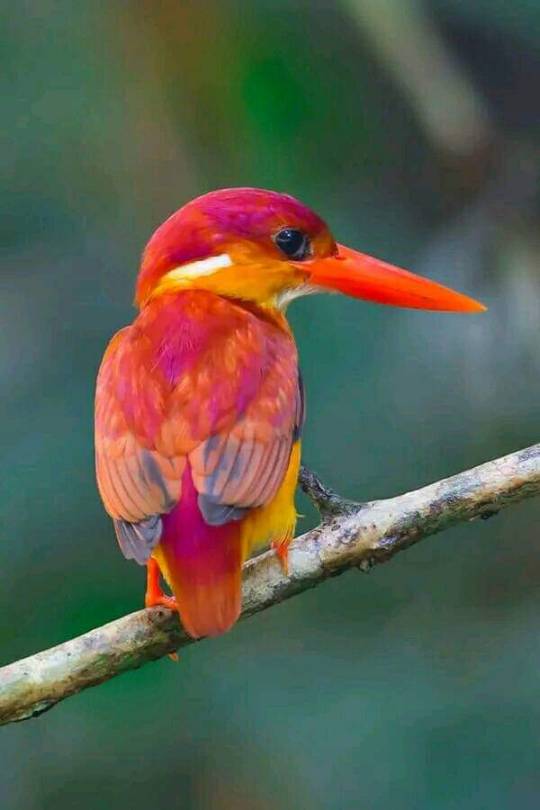#rufous-backed kingfisher
Video
Ceyx erithaca rufidorsa by Benjamin Naden
Via Flickr:
Oriental Dwarf-kingfisher (Rufous-backed Kingfisher)
#WPD22Nature#WPD22Animals#flickr#benjamin naden#photographer#oriental dwarf-kingfisher#rufous-backed kingfisher#kingfisher#bird photography#nature
26 notes
·
View notes
Photo
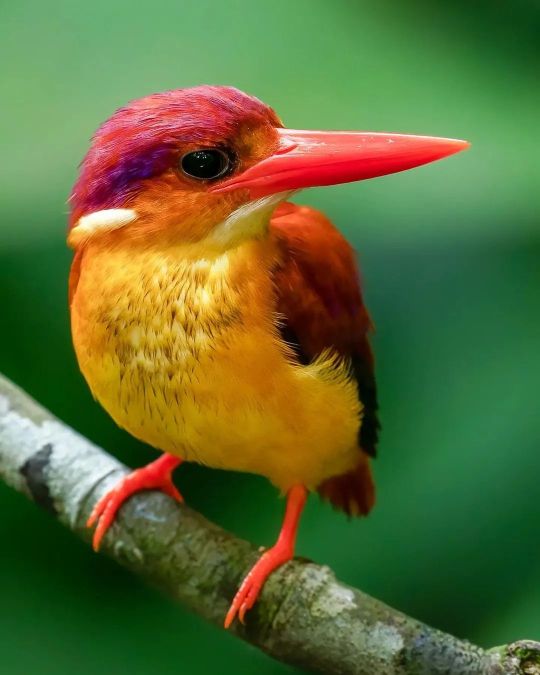
Rufous-backed Dwarf-kingfisher
147 notes
·
View notes
Text

Flamingo
Bullock's oriole (updated 20 Jul '23)
Victoria Crowned Pigeon
Sunbittern
Little auk? (updated 20 Jul '23)
Red-headed barbet?
Scarlet-rumped Tanager
Green broadbill
Violet-backed starling
Great Hornbill
Blue-and-yellow Macaw
Southern Carmine Bee-eater
Atlantic Puffin
Barn Owl
Grey-crowned Crane
Flying Fox (bat)
Epaulet oriole?
Red admiral (butterfly)
Kiwi
Gouldian Finch
Humboldt Penguin
Rufous treepie?
Scarlet Ibis
Woodland kingfisher
Roseate Spoonbill
Green magpie
Buff-bellied hummingbird
Green parrot finch
#charley harper#wings of the world#birds#species identification#suggest corrections in the ask box#questions marks indicate low confidence IDs#this isn't exactly photorealistic y'all
163 notes
·
View notes
Text
Oriental Dwarf Kingfisher (Ceyx erithaca)
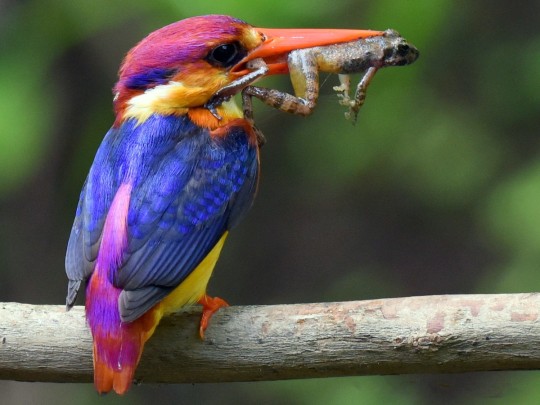
"Colorful! Small!"
Also known as Black-backed Dwarf-Kingfisher or Three-toed Kingfisher
Guys they're just a normal kingfisher who happens to be tiny and also very brightly colored. They're so cute!
This kingfisher is most commonly found in deciduous and evergreen primary and secondary forests across the Indian Subcontinent. They can also be found in alluvial (riverside) forests, rubber gardens, or dense aggregates of palms, bamboo, or other shrubs.
Nests are built into stream banks, road cuttings, or the soil near roots of a fallen tree. The pair will dig together into the soft dirt, carving out a horizontal tunnel which ends in an egg chamber. Both parents will take turns incubating, though the mother stays with the eggs overnight. It takes about 18 days to incubate, and then 18-20 days for the hatched chicks to fledge.
There was some confusing while I was looking for pictures of this bird, especially since e-bird notes that they're named "Black-backed dwarf-kingfisher" and not "Oriental", yet the picture I found did not show a bird with a black back. Apparently some genetic testing has been done, since there has been dispute about the two color morphs being the same species.
"C. erithaca comprises two principal colour morphs: the black morph (the black-backed kingfisher or oriental dwarf kingfisher), and the rufous morph, which is sometimes designated as a separate species, (rufous kingfisher), C. rufidorsa. A recent study has revealed genetic differences between C. erithaca and C. rufidorsa, suggesting that they are not morphs, but two distinct lineages."
Source:
Image Source: eBird - Raghav Gupta
#in memoriam (joke)#battle royale winner#Oriental dwarf kingfisher#Ceyx erithaca#Alcedinidae#tw animal death
11 notes
·
View notes
Text

The oriental dwarf kingfisher (Ceyx erithaca), also known as the black-backed kingfisher or three-toed kingfisher, is a pocket-sized bird in the family Alcedinidae. This tropical kingfisher is a partial migrant that is endemic across much of the Indian Subcontinent and Southeast Asia. It resides in lowland forests, typically near streams or ponds, where it feeds upon insects, spiders, worms, crabs, fish, frogs, and lizards.[7][5] This small bird is easily distinguishable from other birds in its range due to its red bill, yellow-orange underparts, lilac-rufous upperparts, and blue-black back.
1 note
·
View note
Photo
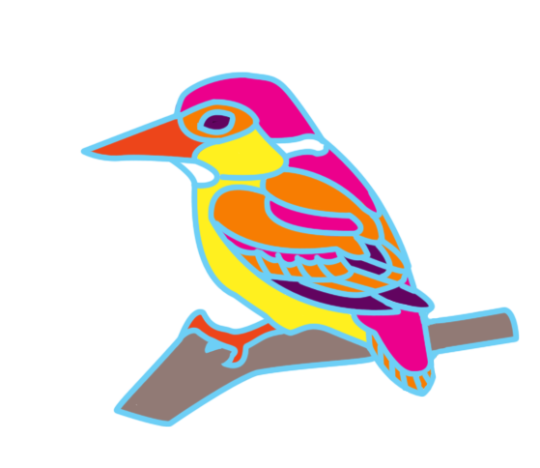
more pride birbs! Best I could find for the lesbian flag is this rufous-backed dwarf kingfisher. Bright!
9 notes
·
View notes
Video
Oriental dwarf kingfisher/উদয়ী-বামনরাঙা by ROKIBUL HASAN RUMMAN
Via Flickr:
© MD ROKIBUL HASAN Please seek permission before use. ----- ----- ----- Travelled 130 miles, One and half hours of tracking in mountain streams, standing still in the pouring rain for over 2 hours! All the struggles became justified seeing this RUBY OF THE EMERALD FOREST, an extremely rare kingfisher in my country ( the Oriental dwarf kingfisher). Such a colorful bird this is! ----- ----- ----- The oriental dwarf kingfisher (Ceyx erithaca), also known as the black-backed kingfisher or three-toed kingfisher, is a pocket-sized bird in the family Alcedinidae. This tropical kingfisher is endemic across much of the Indian Subcontinent and Southeast Asia. It resides in lowland forests, typically near streams or ponds, where it feeds upon insects, spiders, worms, crabs, fish, frogs, and lizards. This small bird is easily distinguishable from other birds in its range due to its red bill, yellow-orange underparts, lilac-rufous upperparts, and blue-black back. The oriental dwarf kingfisher is one of the smallest known kingfisher species. It is only slightly larger than a medium-sized hummingbird and measures 12.5–14 cm in length (including bill and tail). Females typically weigh 14-16g and males 14-21.5g, making the males slightly larger. The two sexes are otherwise alike and sexual dimorphism is not present. Both males and females have a black spot on the forehead; blue and white patches on the side of the neck; a lilac-rufous crown, rump, and tail; a dark blue back and wings; a white chin and throat; pale yellow-orange underparts; a dark brown iris; and red legs, feet, and bill. Juveniles are duller and have less lilac colouring; a white chin, throat and belly; yellow-orange bill with pale tip; and blue scapulars and wing-coverts. This species of kingfisher has three toes, explaining why it is sometimes called the three-toed kingfisher, however, there are other kingfishers which also have three toes. The toe-count in these kingfisher species does not appear to be adaptive. Bird# 120
6 notes
·
View notes
Text
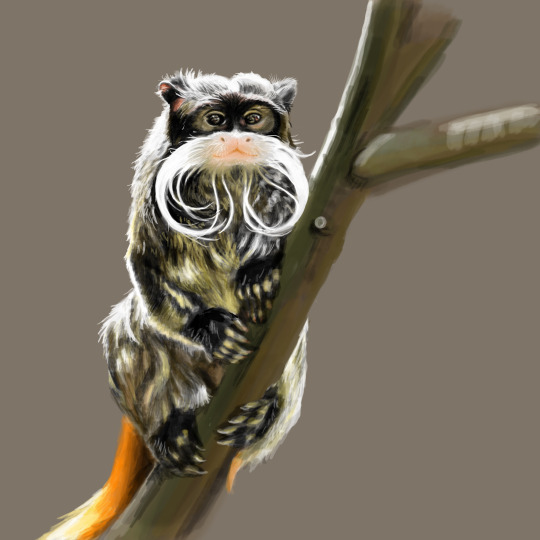
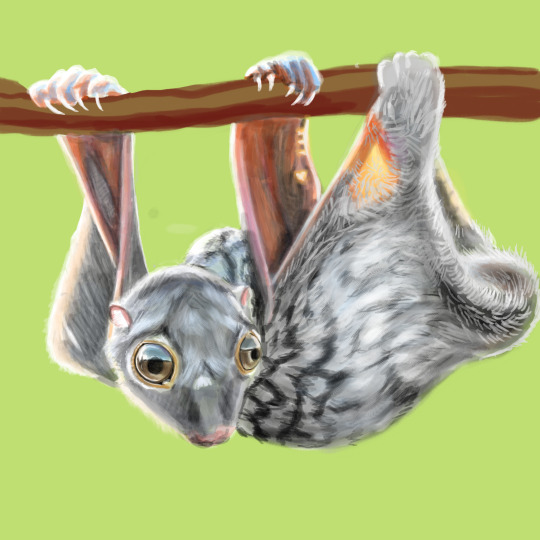
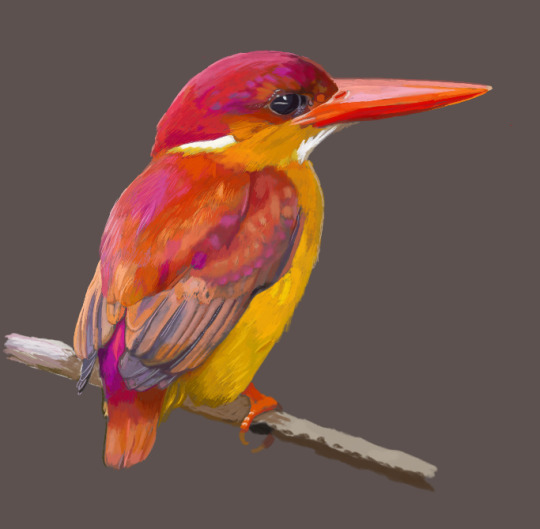
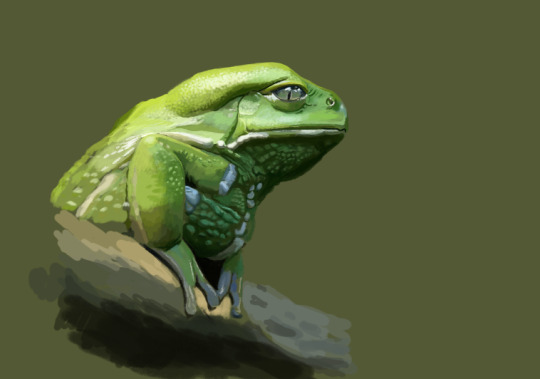
Some more daily weird lil dudes! In order: Emperor tamarin, Sunda colugo, rufous-backed dwarf kingfisher and waxy monkey tree frog :)
#my art#myart#weird lil guys#digital art#still learning but having a lot of fun doing art for the first time in ages#animals#art practice#I'm finally proud of some of these even though they remain unfinished#I just work on them until I get tired
1 note
·
View note
Text
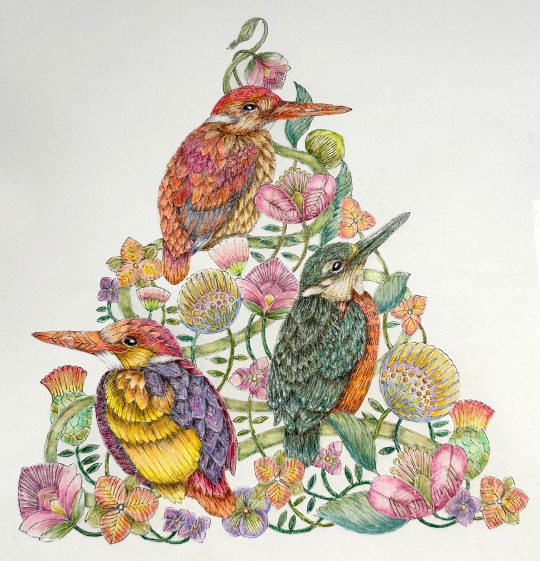
Just finished these delightful Rufous-backed Kingfishers from Millie Marotta’s Wildlife Wonders….Used Holbein, Black Widow, Irojiten pencils, Zig Clean Color pens.
0 notes
Text
Travel Agents in Haridwar
Uttarakhand boasts more than 600 bird species due to its rich biodiversity. It has a temperate forest, coniferous forest, alpine & subalpine moist scrub, rich grassland, wetland & rivers which spur various bird species in the entire region. Although, there are some recognized birding places in Uttarakhand. The best travel agents in Haridwar offer bird-watching tour packages that include the below-mentioned places. Go through them for more information.
Top 05 Bird Watching Places in Uttarakhand by Travel Agents in Haridwar
The pre-eminent Uttarakhand bird-watching regions that are included in packages offered by travel agents in Haridwar include Corbett National Park, Kedarnath Musk Deer Sanctuary, Mussorie - Aglar - Valley - Devalsari - Dhanaulti, Nainital - Sattal - Kilbury - Pangot, and Almora - Binsar - Mukteshwar.
Corbett National Park
The Corbett National Park is one of the most known and visited places in India for bird-watching. As the best travel agents in Haridwar, ABD Holidays offers you packages that include the place. The most identified areas at the Corbett National Park, Dhikala, Bijrani Zone, Marchula, Mohaan Kumeria, Mongoli Valley, Ramganga River, Kosi Barrage & Sitabani for bird watching. The common birds found in these regions include the Great Slaty Brown Dipper The Ramganga & Kosi Barrage. Some other bird species include raptors, vultures, river Lapwings, Ducks, Manganese, Egrets, waterfowls, Herons, Pallas Fishing, Red - Headed Vultures, Hawk Eagles, Crested Hawk-eagle, Himalayan Grey-headed Fishing Eagle, Black Eagles, Golden eagle are the most commonly found birds.
Kedarnath Musk Deer Sanctuary:
The Kedarnath Musk Deer Sanctuary is another well-known and visited place in India for bird-watching. As the best travel agents in Haridwar, ABD Holidays offers you packages that include the place. The specific areas for bird watching in Kedarnath Musk Deer Sanctuary are Chopta Trek, Mandal, Kanchula Kharak, Tunganath, Duggalbitta, and Mukkumath where more than 200 bird species are found. Common birds that are found include Great Barbet, Green Backed Tit, Black Lored Tit, red Headed Tit, White Browned Tit, Rusty Cheeked Scimitar Babbler, Blue Whistling Thrush, White Colored Blackbirds, Greater long Billed Thrush, Himalayan Pied Woodpecker, Rufous Bellied Pied Woodpecker, Slaty headed Parakeet, Bar Throated Minlas, Common Hill Partridge, Indian Pied Hornbill &, etc.
Mussorie - Aglar Valley - Suakholi - Devalsari - Thatyur - Dhanaulti
The trail of Mussorie, Aglar Valley, Devalsari, and Dhanaulti is not so highly popular, but a must-visit place in India for bird-watching. As the best travel agents in Haridwar, ABD Holidays offers you packages that include the place. The bird-watching trail of Mussorie, Aglar Valley, Devalsari, and Dhanaulti, boasts more than 200 bird species. Common birds that are found include Slaty headed Parakeet, Brown streaked Laughing Thrush, Black-Throated Thrush, Rufous Shrike, Plumbeous & White Capped Redstarts, White Breasted Kingfisher, Black Naped Pied Woodpecker, Brown Fronted Pied Woodpecker, Grey Headed Flycatcher, White Browned Blue Flycatcher, Rufous Tailed Flycatcher, Green Backed Tit, Red-headed tit, etc.
Nainital- Sattal-Pangot & Kilbury
The trail of Nainital- Sattal-Pangot & Kilbury is not so highly popular, but a must-visit place in India for bird-watching. As the best travel agents in Haridwar, ABD Holidays offers you packages that include the place. Nainital’s famous bird-watching spots include Snow Viewpoint, Tiffin Top, Hanumangarhi & adjacent renowned places like Sattal, Pangot & Kilbury, which house more than 200 bird species. Common birds that are found include Streaked Laughing thrush, Red-Billed Blue Magpie, Spotted & Slaty Backed Forktail, Rufous-bellied Woodpecker, Scaly bellied Woodpecker, Himalayan Woodpecker, Kalij Pheasant, Koklass Pheasant, Cheer-Pheasant, Plum Headed Parakeet & many more.
Almora-Binsar-Mukteshwar
The entire circuit of Almora – Binsar - Mukteshwar is counted as one of the richest avifauna Species habitats in Asia and Binsar has been categorized as an important bird area by Birdlife International consisting of around 500 bird species. This is the reason why ABD Holidays, one of the best travel agents in Haridwar has included the place in their packages and itineraries. The notable bird species in the Almora – Binsar - Mukteshwar include Fork tails, Magpie, kingfishers, Woodpeckers, Great Barbet, Streaked Laughing Thrush, Blue whistling Thrush, Scaly Thrush, Himalayan pied Kingfisher, Green Backed Tit, Breasted Green Finch, Common Rosefinch, Grey Slaty Woodpecker, Grey Headed Woodpecker, Brown Fronted Woodpecker, Lesser Yellow-naped Woodpecker.
Wrapping Up
There are several other spots as well apart from the above-mentioned ones which are considered best for bird-watching. If you want to visit any of these places, opt for ABD Holidays packages as we are among the best travel agents in Haridwar. Visit our website to know more.
0 notes
Photo
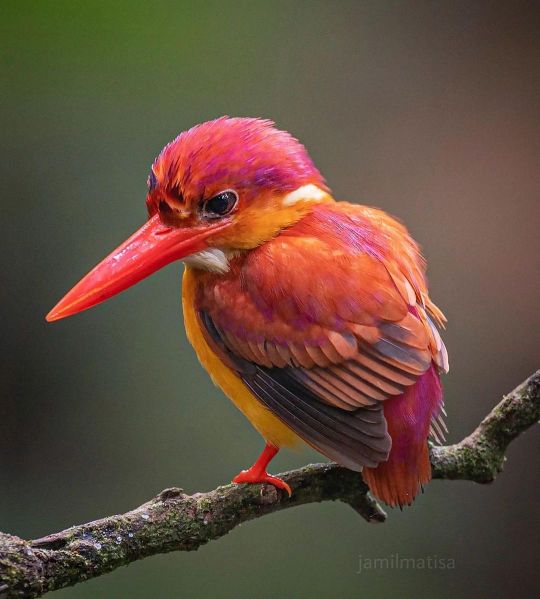
Rufous-backed Kingfisher
178 notes
·
View notes
Photo
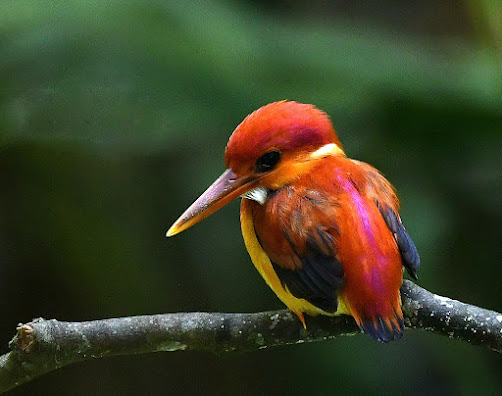
Rufous-back Dwarf Kingfisher @ Sungai Congkak, Selangor, Malaysia
0 notes
Text



the rufous-backed dwarf-kingfisher is a small member of the kingfisher family (only slightly larger than a hummingbird) endemic to south asia. the primary prey of this species is insects, caught in flight; however, like their name suggests, they also take aquatic prey such as crabs and fish. the coloration between the sexes is identical, but males are slightly larger.
592 notes
·
View notes
Photo

Rufous-backed Kingfisher
#500px#birdwatching#beak#feather#animal#wild#birds#tree#wildlife#Rufous-backed Kingfisher#kingfisher
0 notes

